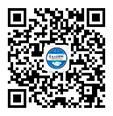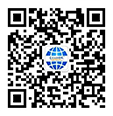| [1] |
国家质量监督检验检疫总局. JJF1059.1-2012 测量不确定度评定与表示[S]. 北京: 中国计量出版社, 2012: 4-5.
|
| [2] |
ISO/IEC Guide 98-3(2008). Uncertainty of measurement —Part 3: Guide to the expression of uncertainty in measurement[S].
|
| [3] |
|
| [4] |
韩德娟, 高艾英, 高大山. 液相色谱串联质谱内标法测定猪肉中沙丁胺醇及莱克多巴胺残留量的不确定度分析[J]. 食品安全质量检测学报,2020,11(1):223−230.
|
| [5] |
Radim Štěpán, Jana Hajšlová, Vladimı́r Kocourek, et al. Uncertainties of gas chromatographic measurement of troublesome pesticide residues in apples employing conventional and mass spectrometric detectors[J]. Analytica Chimica Acta,2004,520(1−2):245−255. doi: 10.1016/j.aca.2004.05.045
|
| [6] |
戚亭, 郭利攀, 裴华, 等. 分光光度法测定火腿肠中亚硝酸盐含量的不确定度评定[J]. 食品安全质量检测学报,2020,11(1):140−145.
|
| [7] |
刘旭, 任正东, 蒋国振, 等. 液相色谱-质谱/质谱法测定谷物中甲磺隆残留量的测量不确定度评定[J]. 粮食与饲料工业,2018(9):56−59.
|
| [8] |
ISO. Guide to the expression of uncertainty in measurement[S]. Geneva, 1993.
|
| [9] |
ISO. ISO/IEC 17025: 1999 General requirements for the competence of calibration and testing laboratories [S]. Geneva, 1999.
|
| [10] |
袁国玉. 测量不确定度评定中的Top-Down技术概述[J]. 中国检验检测,2017,25(1):34−37, 55.
|
| [11] |
化学分析中不确定度的评估指南: CNAS-GL 006-2019[S]. 北京: 中国计量出版社, 2019.
|
| [12] |
|
| [13] |
|
| [14] |
孙小龙, 加力, 毛敏, 等. 气相色谱-质谱联用法测定豆角中3种拟除虫菊酯类农药残留的不确定度评定[J]. 现代食品,2019(20):188−193.
|
| [15] |
|
| [16] |
|
| [17] |
|
| [18] |
Hu Beizhen, Cai Haijiang, Song Weihua. Determination of eight pesticide residues in tea by liquid chromatography-tandem mass spectrometry and its uncertainty evaluation.[J]. Chinese Journal of Chromatography,2012,30(9):889.
|
| [19] |
中华人民共和国国家卫生健康委员会, 中华人民共和国农业农村部, 国家市场监督管理总局. GB 23200.113-2018 食品安全国家标准植物源性食品中208种农药及其代谢物残留量的测定[S]. 北京: 中国农业出版社, 2018.
|
| [20] |
中华人民共和国国家卫生健康委员会, 中华人民共和国农业农村部, 国家市场监督管理总局. GB2763-2019 食品安全国家标准食品中农药最大残留限量[S]. 北京: 中国农业出版社, 2019.
|
| [21] |
Codex Committee on Pesticide Residue (CCPR). Guidelines on estimation of uncertainty of results: CAC/GL 59-2006[S]. Amendment, 2011.
|
| [22] |
|
| [23] |
Angela Paoloni, Sabrina Alunni, Alessandro Pelliccia, et al. Rapid determination of residues of pesticides in honey by µGC-ECD and GC-MS/MS: Method validation and estimation of measurement uncertainty according to document No. SANCO/12571/2013[J]. Journal of Environmental Science and Health, Part B,2016,51(1−3):133−142.
|
| [24] |
M DabalusIslam, M Schweikert Turcu, A Cannavan. Comparison of methods for the estimation of measurement uncertainty for an analytical method for sulphonamides[J]. Food Additives & Contaminants: Part A,2008,25(12):1439−1450.
|
| [25] |
国家质量监督检验检疫总局. JJG 196-2006常用玻璃量器检定规程[S]. 北京: 中国计量出版社, 2007.
|
| [26] |
国家质量监督检验检疫总局. JJG 646-2006移液器检定规程[S]. 北京: 中国计量出版社, 2007.
|
| [27] |
|
| [28] |
Paul Bièvre. Measurement uncertainty is not synonym of measurement repeatability or measurement reproducibility[J]. Accreditation and Quality Assurance,2008,13(2):61−62. doi: 10.1007/s00769-008-0371-0
|











 DownLoad:
DownLoad: